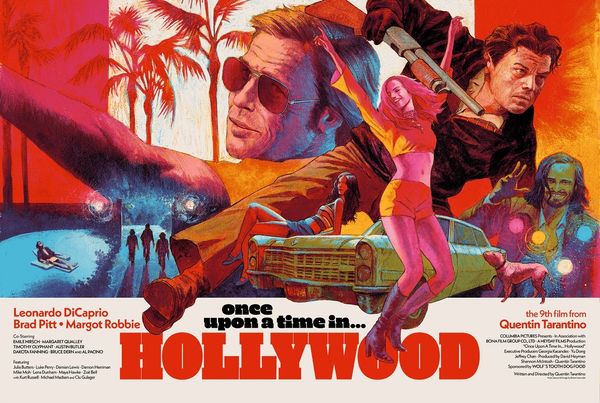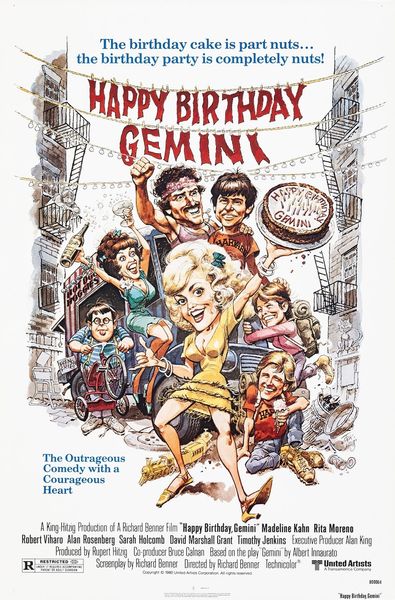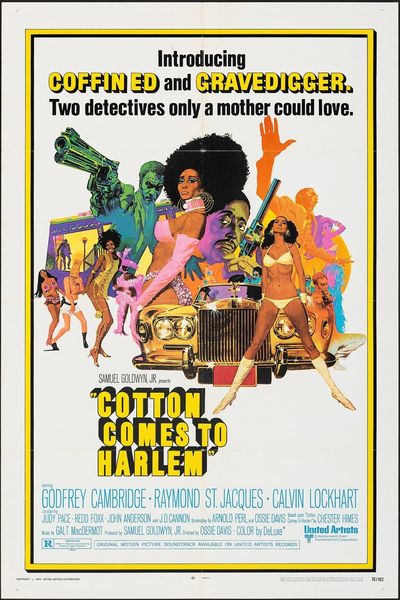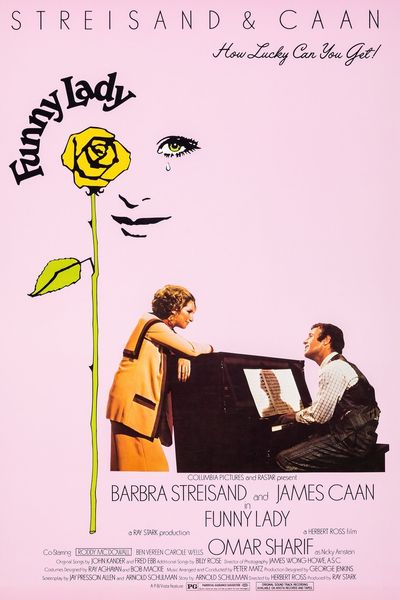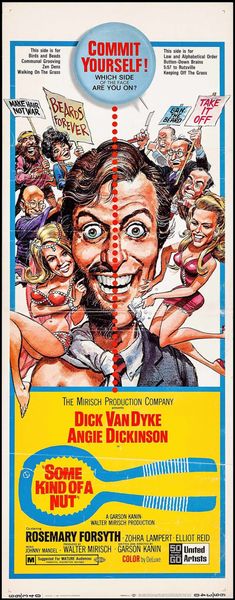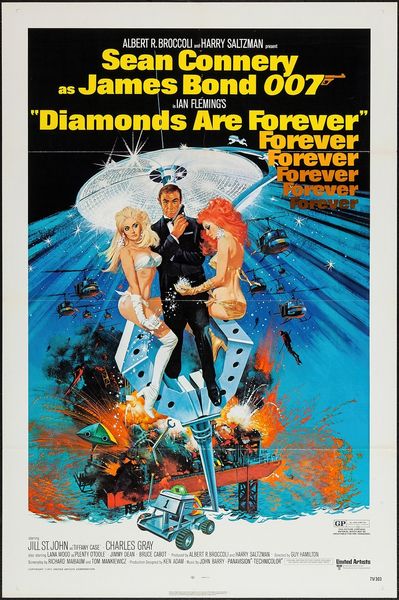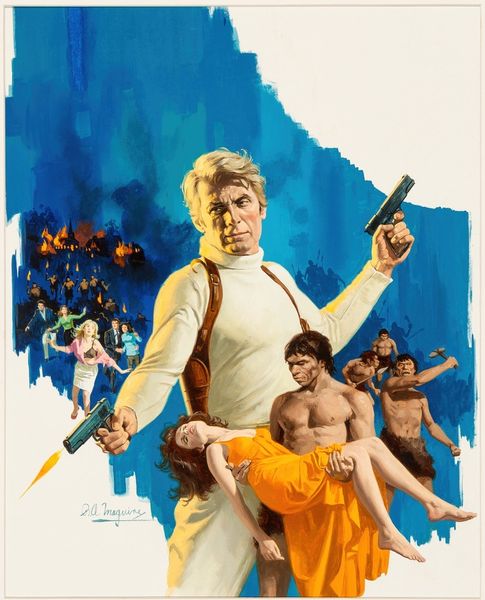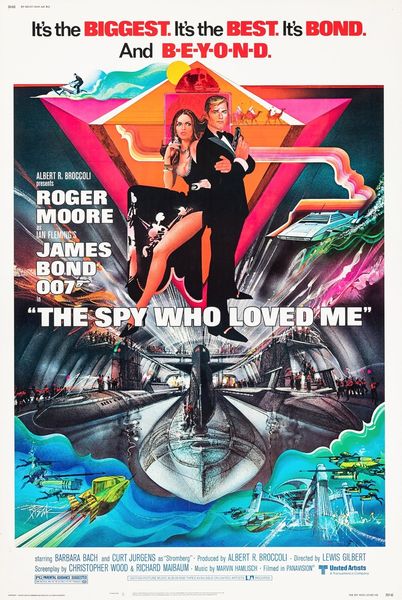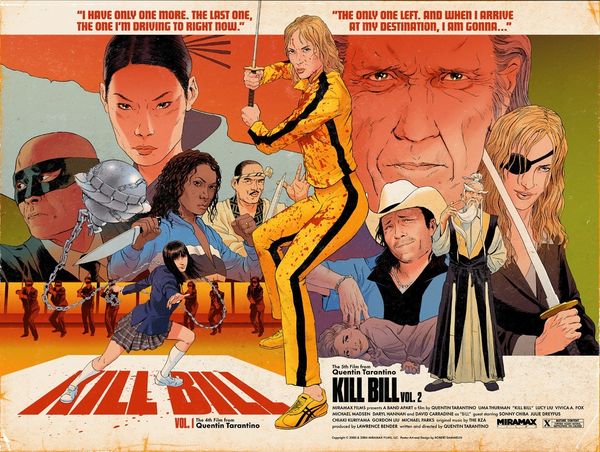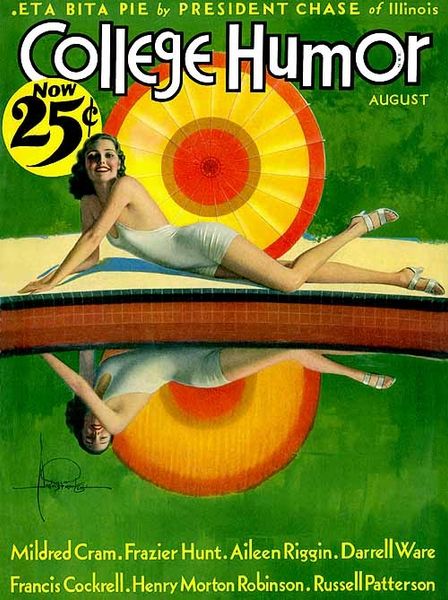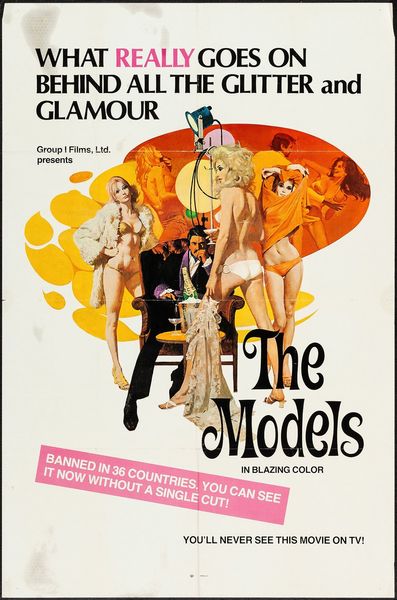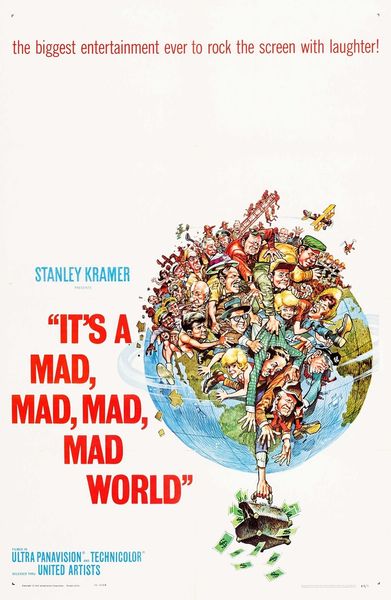
poster
popart
pop art
figuration
pop-art
cityscape
poster
Copyright: Modern Artists: Artvee
Curator: This is Robert McGinnis' poster for the 1967 film "Barefoot in the Park." The film, based on Neil Simon's play, captured a specific moment in American culture. Editor: It’s visually so buoyant! The bright colours—the optimistic greens, the popping pink, the confident blues—all scream "Pop Art!" There’s an immediate sense of lightness, fun and even rebelliousness with the dancing figures flinging shoes around! Curator: Yes, it perfectly embodies the Pop Art aesthetic of the era. Notice the stylized depiction of Central Park and the city skyline, rendered in those simplified, almost cartoonish forms that were trending at that moment. Also note the bold typography, emphasizing the title and the playful slogans. Editor: Definitely. But beyond just the visual style, the medium itself—a mass-produced poster—is key. It democratizes the art experience. Instead of being confined to galleries, it enters the public sphere, pasted on walls, shaping urban environments and capturing a collective mood around youth, liberty and enjoyment of life's most delightful gifts. Curator: Absolutely. And consider the social context. 1967 was a time of cultural shifts, youthful rebellion, and changing attitudes toward relationships. This poster, along with the film, reflects that zeitgeist of liberation and carefree love within urban landscapes. The commercial imperatives of filmmaking shaped what themes were visible in public space. Editor: I agree. The film and poster provide interesting insight into post-war labor practices for film marketing. Also I can't help but find myself gravitating towards what's been rendered through physical work—how a sketch can manifest as print and proliferate across walls or magazines. Curator: Indeed, it's an object embedded within complex social and economic forces. It embodies a specific cultural narrative from that moment in American history. Editor: So, a mass-produced invitation to carefree fun and what's been rendered as the most important and enjoyable of all freedoms. It reflects the visual excitement of youth's first encounters. Curator: Yes, an invitation extended across time, to revisit how those youthful narratives get packaged, sold and lived out.
Comments
No comments
Be the first to comment and join the conversation on the ultimate creative platform.


